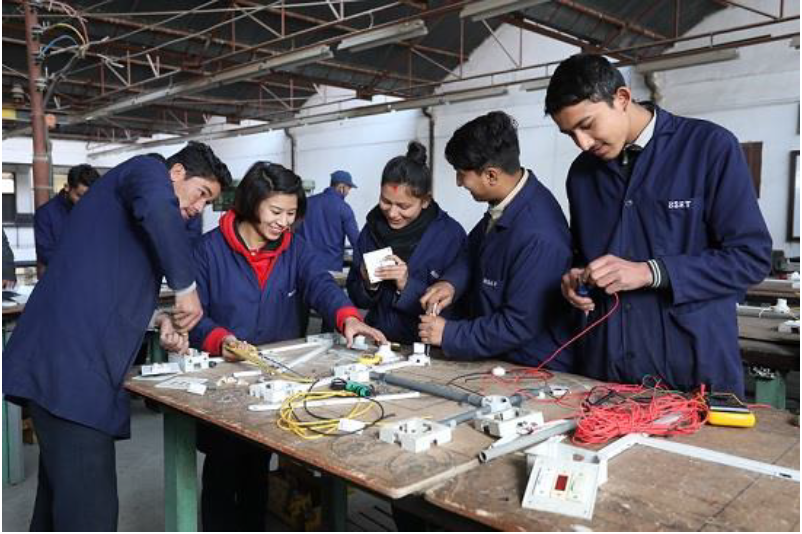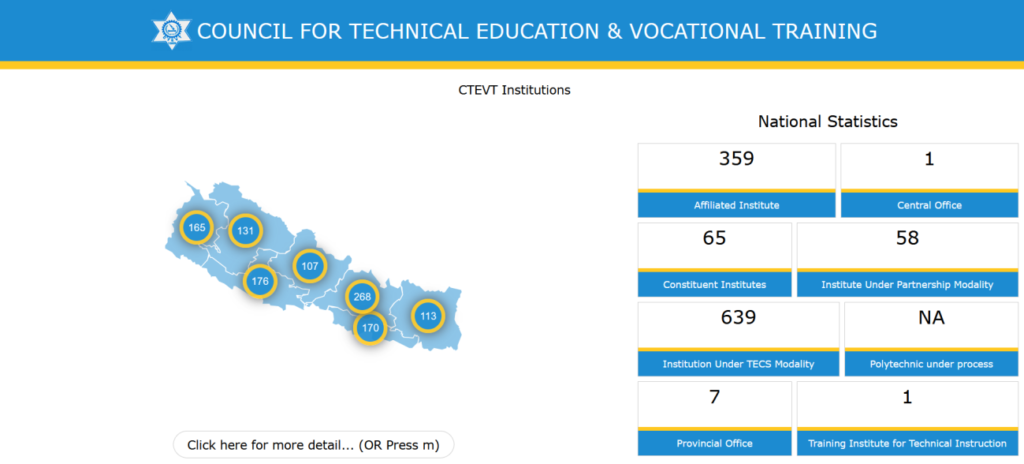Restricted Understanding of Education In Our Subconscious
There is a heightened emphasis on formal education in Nepal to climb the socio-economic ladder and be a respected member of the society. It is apparent to anyone who has grown up in Nepal that the insistence on and desire of getting a government job is a phenomenon that fascinates you.
We have formed cliches around professions like Doctors, Engineers and the ones who fail at these and end up pursuing other professions. The outright craze which one witnesses in and around preparation centers of IOE and IOM exams is a sight to behold for anyone who has a passing interest in studying societies.
Technical Education in the context of Nepal:
While Professions which do not require lakhs of investment upfront can earn a decent amount with 2-3 years of experience are disregarded as professions not worth getting into. Professions a 17–18- year-old after finishing high school can pursue with limited investment and can start earning within 15-24 months can be reasonable alternatives.
How is Technical Education defined?
Careers and education focused on the training in application of a specific science/technology fall under the milieu of technical education. The scope of education puts an emphasis on developing a particular skillset such as Masonry, Construction Carpenter, Plumbing, Computer/Electronic Device Repair, Building Electrician to name a few.
Role of CTEVT in Training in Technical Education and Vocational Training:
Since 1989, CTEVT has been working to prepare a skilled workforce in Nepal. They provide technical education in a wide range of areas: From a Car/Motorbike Mechanic to Beautician Training, there is diplomas/certifications provided by CTEVT have helped empower and train skilled workers in Nepal.

(Fig1.1: Students in Electrical Training, CTEVT Balaju) (Source:CTEVT)
We are going to delve into one of the projects that CTEVT completed with the help of European Union:

(Fig1.2: CTEVT Institutions across Nepal) (Source:CTEVT)
SAKCHYAMTA:
After an agreement with the Government of Nepal and European Union, Project SAKCHYAMTA was implemented. With the goal of “scale up the quality of TVET (Technical and Vocational Education and Training) provision and implementation ensuring that it is made available through outreach to the most disadvantaged”.
The project period was implemented in the years 2017-2021.
As stated from CTEVT,
Expected Result
- Developing CTEVT Human Resource Management (HRM) Plan.
- Strengthening CTEVT and affiliated institutes by providing capacity development trainings to the staffs/trainers.
- Identifying 15 most demanded occupations and developing new curriculums for the same. Also, updating evising 15 existing curriculums.
- Identifying and testing new curriculum making method other than DACUM.
- Developing e-learning system through three CoEs.
- Developing Quality Assurance Framework for TVET and testing it through 3 CoEs.
- Coordination and Collaboration with TVET stakeholders at government, private, public level.
- Collaboration and coordination with provincial and local level government to expand TVET programmes at provincial and local levels.
Problems:
The curious thing one notices is that there is a distinct lack of end of the project result and implementation of the project. It is not to say that nothing of what was stated ended up being implemented but the lack of data on the implementation part is concerning to say the least.
They have awarded research opportunities, one of which we came across was:
Labour Market Analysis for Human Resource Projection submitted by Central Department of Economics (CEDECON), Faculty of Humanities and Social Sciences (FoHSS),Tribhuvan University, Kirtipur.
http://www.ctevt.org.np/public/uploads/kcfinder/files/Final%20report%20Labor%20market%20analysis_compressed.pdf
Summary:
Technical Education although is a viable alternative for Nepal. Its future is limited by the number of small and medium scale industries present in Nepal currently. The attraction towards technical education will grow as share of Industries increases in the domestic economy of Nepal. As industries will start demanding more and more workforce, the wages will certainly grow and the attitude of the society towards technical jobs will have to change if Nepal
Sources in the article for more information:
http://ctevt.org.np/what-is-tvet
http://www.ctevt.org.np/sakchyamta
http://www.ctevt.org.np/documents/list/publication



